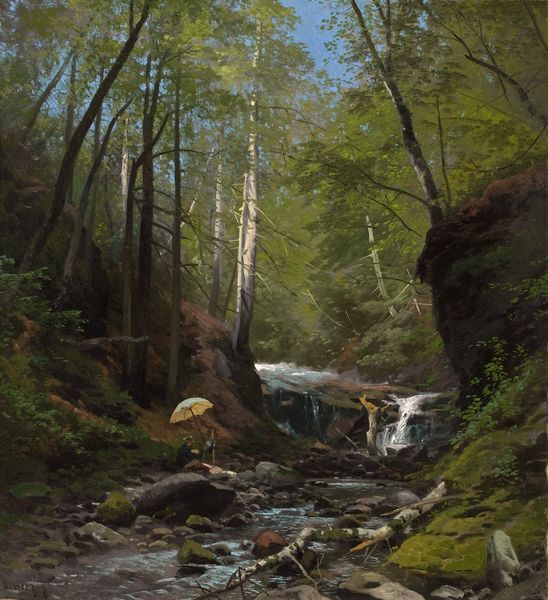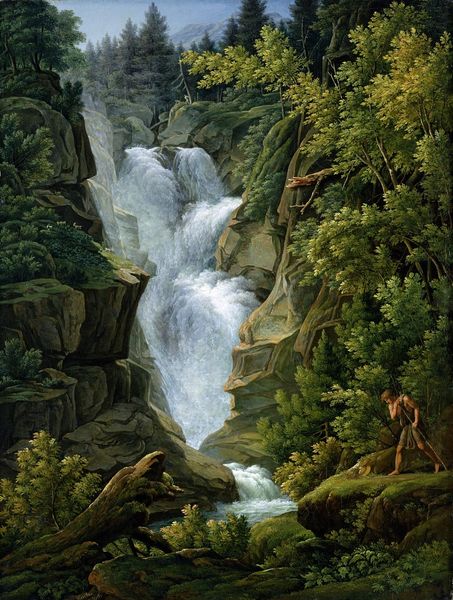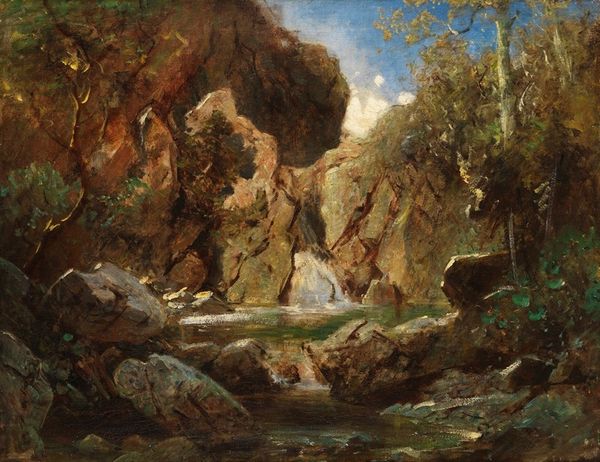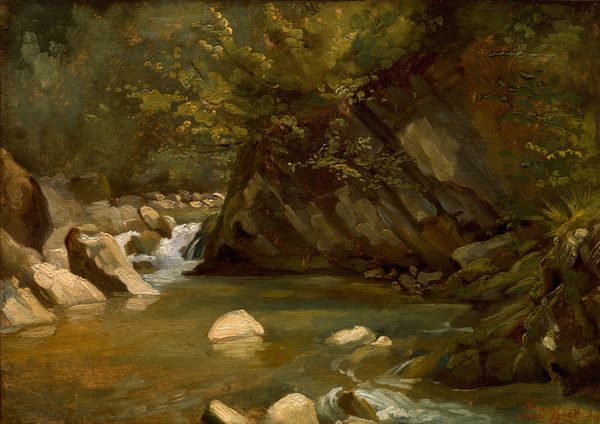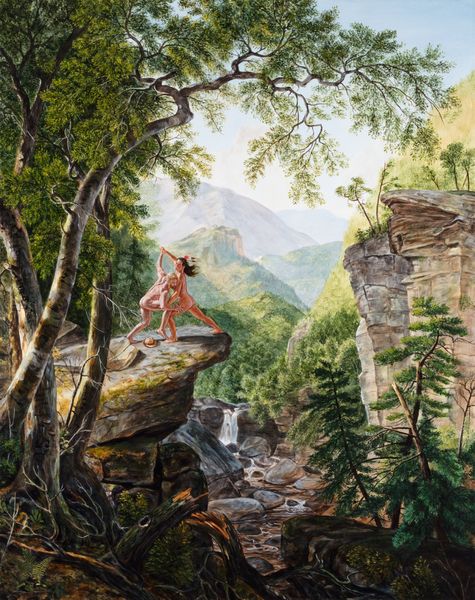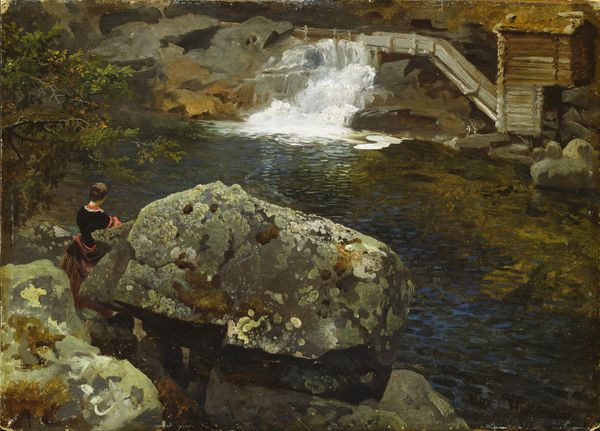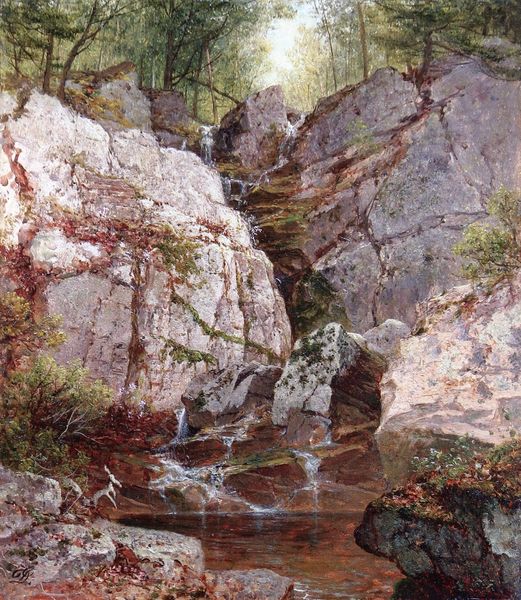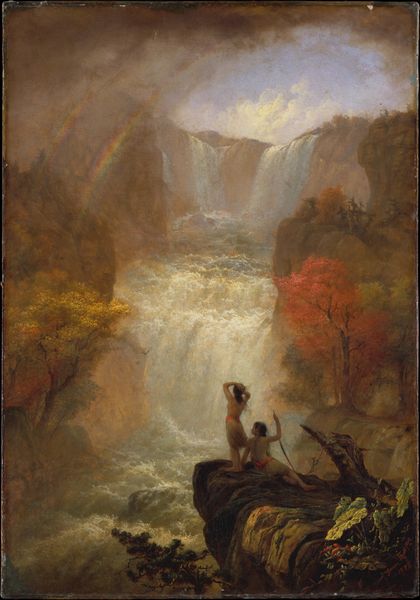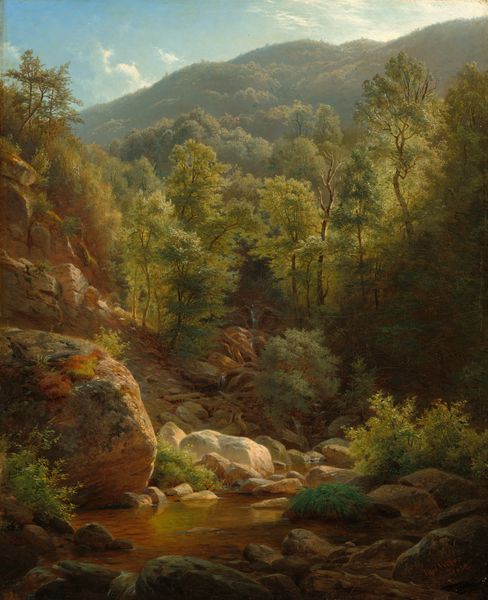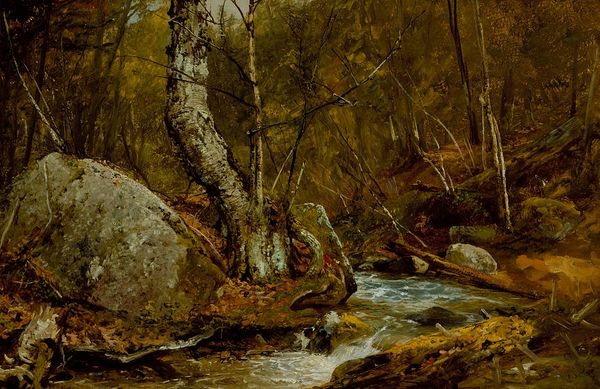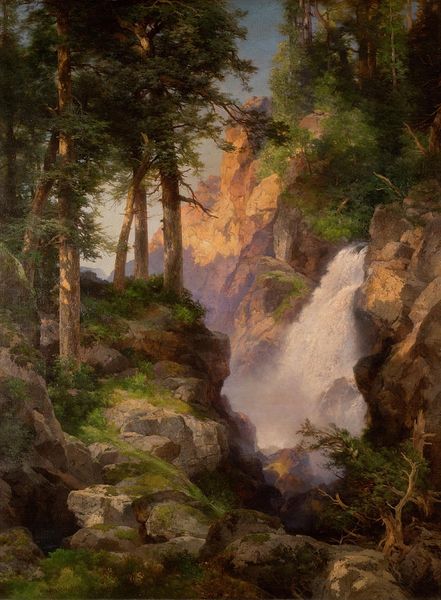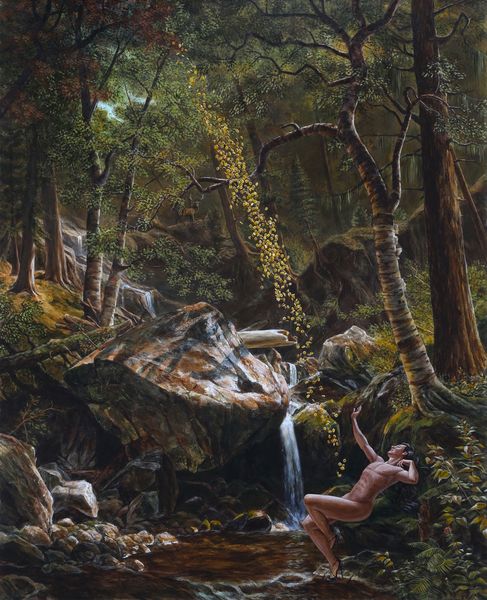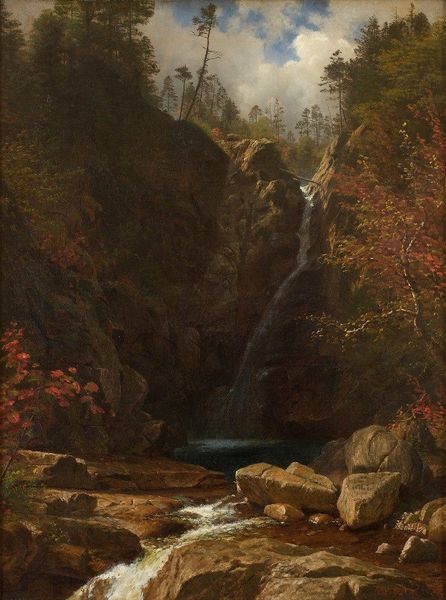
painting, oil-paint
#
allegory
#
painting
#
oil-paint
#
landscape
#
figuration
#
oil painting
#
history-painting
#
nude
#
erotic-art
#
realism
Copyright: Kent Monkman,Fair Use
Editor: We're looking at "Leda and the Swan," an oil painting by Kent Monkman. It reinterprets a well-known myth, but setting it within a distinctly North American landscape changes things completely. It's a striking, almost unsettling piece. What do you see in it? Curator: The strength of this piece lies in how Monkman appropriates and subverts a loaded European art historical trope. Leda and the Swan is historically framed within a context of violent sexuality and idealized beauty. What happens when this encounter occurs within the contested space of a colonial landscape? Monkman is asking us to consider who has the power to represent history. Editor: So, it's not just about the myth itself, but who gets to tell that story and from what perspective? Curator: Exactly. Notice the landscape itself—the waterfall, the vegetation. These are not just generic symbols; they suggest a specific place, a claimed territory. Consider also Monkman’s genderfluid, two-spirit persona, Miss Chief Eagle Testickle as a protagonist in his art. Does the power dynamic change through this? Editor: The beavers! I almost missed them. Their presence adds another layer. Curator: Precisely! The beavers introduce a dimension of Indigenous presence and animal agency within this contested visual space. They’re not passive observers; they are active participants in the scene. This piece is an intentional disruption of traditional art historical narratives. The inclusion of beavers is a brilliant commentary on land rights and how historical narratives can erase indigenous voices. It’s more than just a painting; it's a statement. Editor: This has definitely shifted how I viewed this painting. I was initially focused on the dramatic elements of the myth, but I now realize the social commentary is front and center. Curator: And hopefully you now realize how crucial it is to consider art within a broader socio-political landscape and its power dynamics. Editor: I do! Thanks for sharing your expertise!
Comments
No comments
Be the first to comment and join the conversation on the ultimate creative platform.
